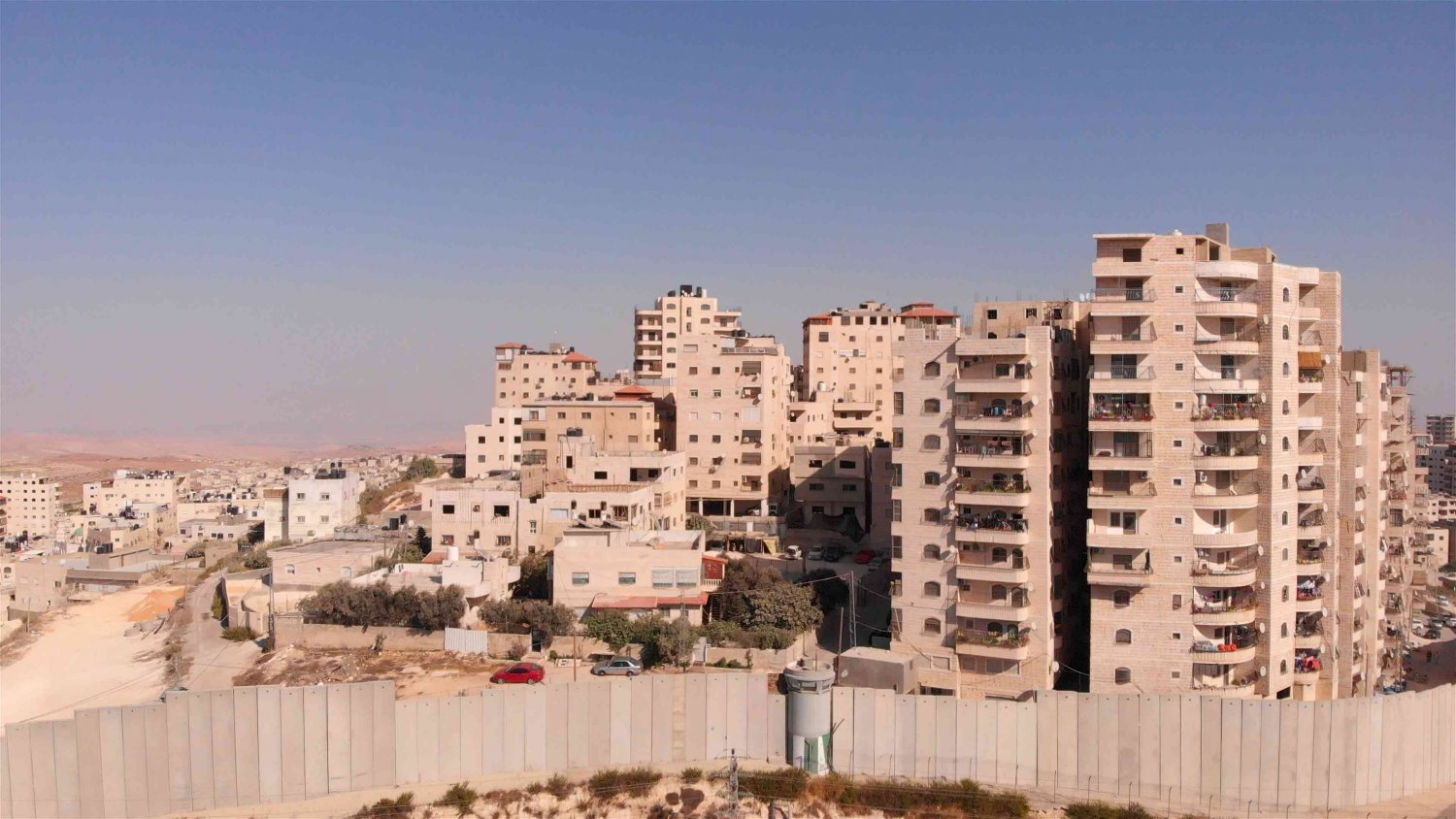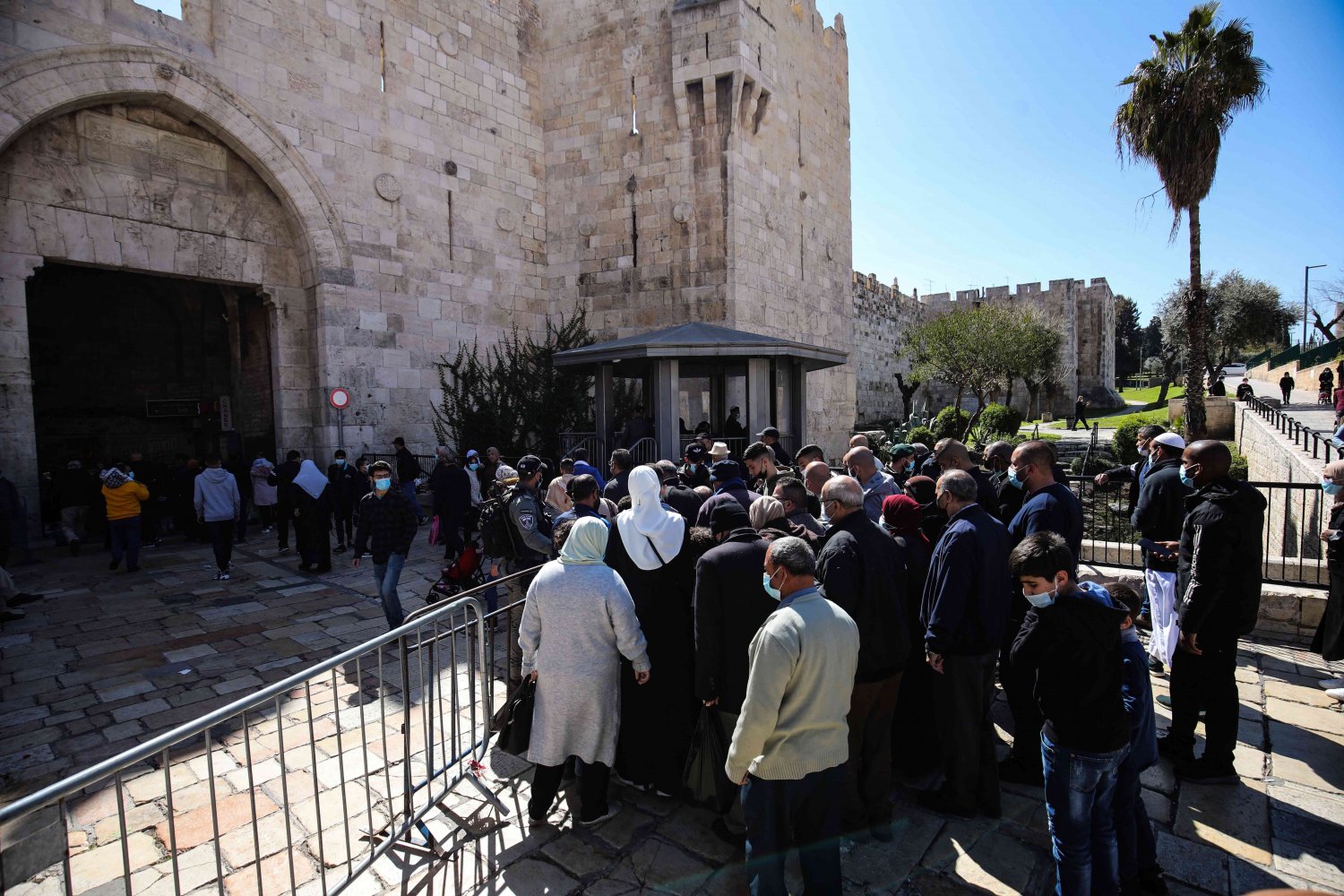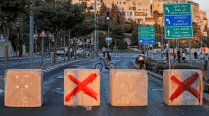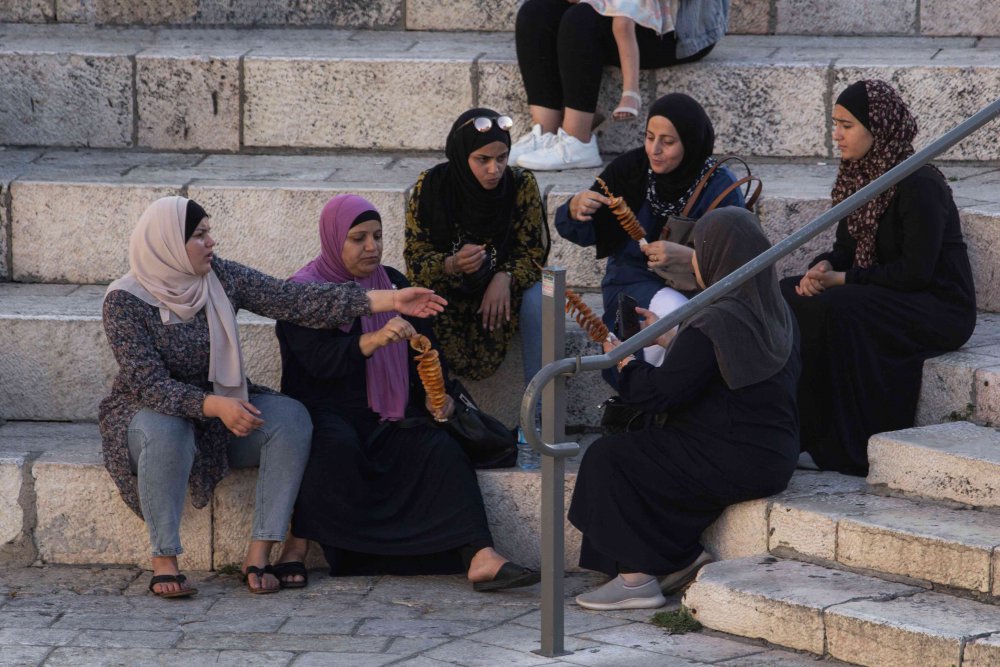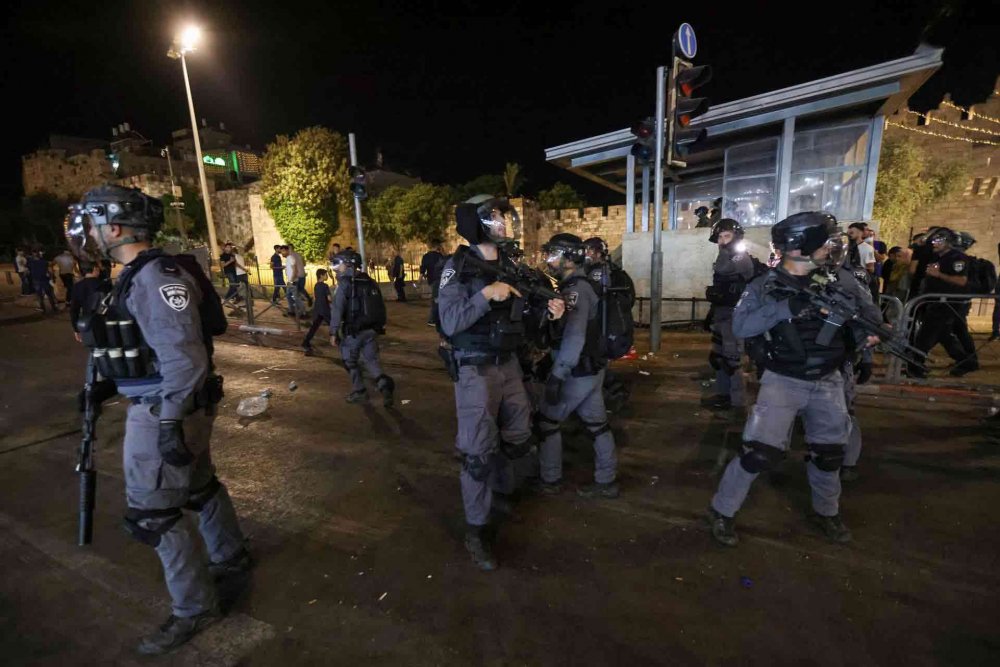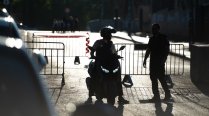Rinad,1 22, was born in Shu‘fat refugee camp, which lies Inside the Israeli municipal boundaries of Jerusalem but outside the massive Separation Wall, in a kind of “exclave” that was created when the wall was completed about 15 years ago. It split Palestinian neighborhoods that belong to the city off from it. Their only way into their city is through a single military checkpoint.
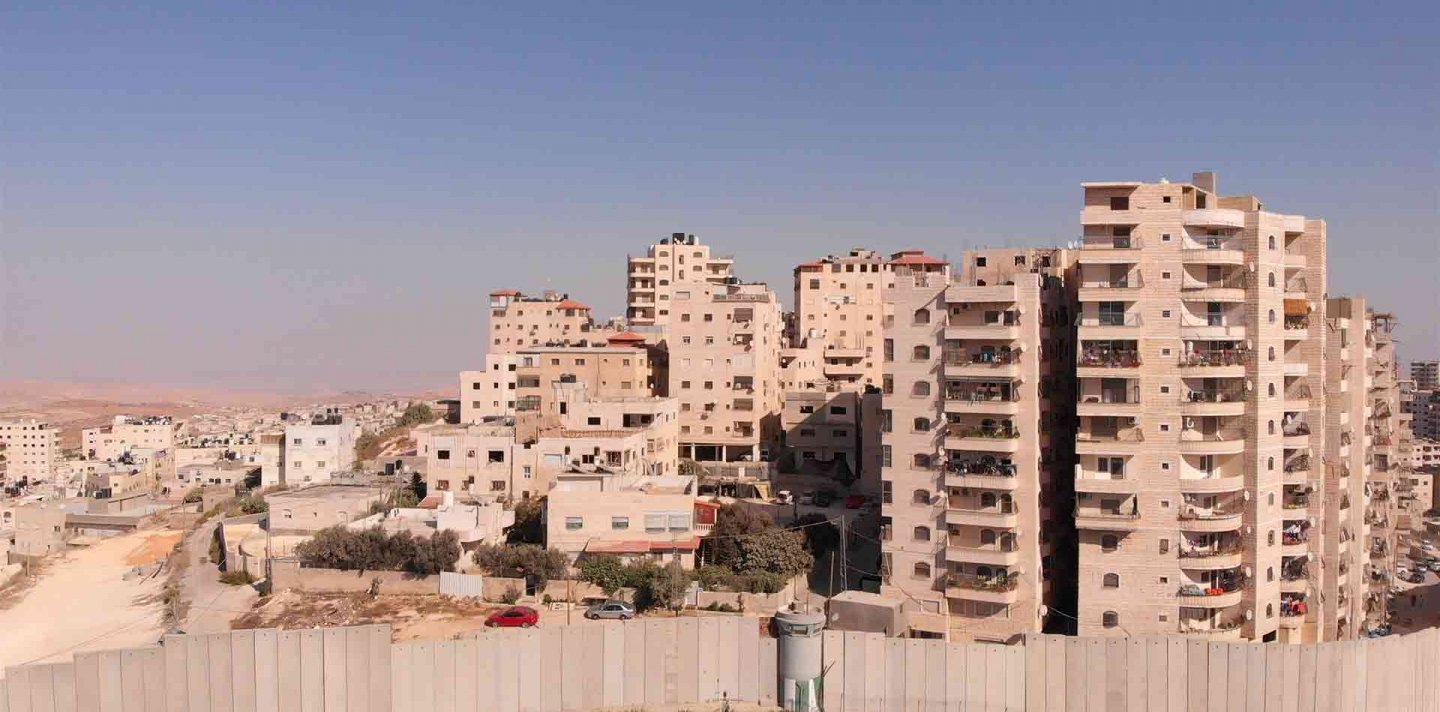
Credit:
Shutterstock
“I’ve Spent 10 Months of the Past 10 Years Waiting at Checkpoints”
Snapshot
Rinad describes the ways in which the closure that Israel has imposed on Palestinians wishing to access Jerusalem have shaped her daily realities for as long as she can recall, and altered the entire fabric of East Jerusalem, the formerly bustling Arab side of the city, turning it into a commercial and cultural ghost town.
Classroom Time Lost Forever; Life Disrupted
Growing up, Rinad attended a school located just outside the walls of the Old City of Jerusalem, which is right in the heart of the city—i.e., on the other side of the Separation Wall. Rinad explained that she and her schoolmates were always late to school, because they had to wait in line to pass Israeli checkpoints, both permanent and impromptu (“flying”).
“I had to pass the checkpoint every day. Other girls who lived in neighborhoods located inside the Separation Wall were also late, because of the flying checkpoints.” Since she was a teenager, Rinad has had to pass through the checkpoint that controls access to the camp at least five times a week to go into the main areas of Jerusalem.
Rinad can see the checkpoint from her bedroom window. The soldiers keep three lanes open at night, but they close two lanes and keep only one open at 7:00 a.m. during the peak traffic hour.
She lives less than 100 meters from the checkpoint, but she was always late to school. She also remembered how school administrators told the students to come to school, even if they were two hours late.
Rinad recalls a typical experience in 2015. “When the ‘stabbing war’2 started, thousands of Palestinians were waiting at the checkpoint to leave for work or school, and I was one of them. I waited for more than two hours before going back home. I did not go to school that day. I believe many others turned back as well,” she said.
Rinad explained that her access to the city is often dependent on the moods of the soldiers staffing the checkpoint. “They sometimes close the checkpoint and block us from passing because one of them is going through a romantic breakup.” She has to wait until they feel like reopening the checkpoint and allowing her to pass; this has become a “normal situation” for her.
Rinad shares, “I estimate that I’ve spent 10 months of the past 10 years waiting at checkpoints.”
Fabric of Daily Life Redirected away from Jerusalem
Because of the closure imposed on Jerusalem and the long hours spent waiting at the checkpoint, Rinad’s family members and neighbors prefer to go to Palestinian cities located in areas under the administration of the Palestinian Authority (PA) (on the same side of the wall, so no checkpoint required) instead of going to the Old City of Jerusalem to buy their groceries or to enjoy a shawarma sandwich in a restaurant. Sometimes they even decide to stay home, because they do not want to have to stop at a checkpoint. “Israel’s overall goal is to empty Jerusalem of its indigenous people,” said Rinad. “There are 15,000 Palestinians living in the refugee camp, and they all face the same restrictions on their movement.”
Rinad talked about the Israeli policy of erasing Palestinian social life in Jerusalem in general and in the Old City of Jerusalem in particular. “They do not want Palestinian social gatherings in Jerusalem.” She believes that highly populated Palestinian Jerusalemite communities behind the checkpoints, such as Shu‘fat refugee camp and Kufr ‘Aqab, give evidence of this policy. “The policy forced Palestinian Jerusalemites to live there; then they imposed military checkpoints to restrict their movement, to isolate them, and dissolve their connection with their city,” said Rinad.3
Many Palestinian Jerusalemites cannot afford to live in the city, but they have to stay within Jerusalem municipal boundaries in order to retain their residency rights (see Precarious, Not Permanent: The Status Held by Palestinian Jerusalemites). They end up in more affordable areas behind the Separation Wall, the now-exclaves such as Kufr ‘Aqab and Shu‘fat refugee camp, where they must contend with checkpoints on a near-daily basis.
Palestinian Jerusalemites living in communities located outside the Separation Wall avoid passing the checkpoints unless they have to. Before the wall was built, Salah al-Din Street in East Jerusalem (nearby the Old City) was a center for Palestinian commercial, economic, and cultural activities. Since then, approximately 5,000 Palestinian businesses have been forced to shut down because of lack of customers.4 The street has become listless and empty of life. “If I am going to Salah al-Din Street, which is 15 minutes away from home, I leave one and a half hours earlier to make sure I arrive on time,” explained Rinad.
Rinad discussed how military observation towers and checkpoints around the Old City, the Israeli soldiers’ heavy presence at Bab al-Amud, and the soldiers’ aggressive behaviors toward Palestinians make people think twice before going to Jerusalem.
The Checkpoint and the Camp
Rinad shared that camp residents have developed ways to support one another at checkpoints. For example, hitchhiking (not very common among Palestinian communities generally) is a common practice for camp residents. The schedules of buses servicing the camp are negatively impacted by the checkpoints. Sometimes buses are held up at the checkpoint for hours, and residents find themselves waiting at the bus stops for an hour to catch a bus downtown.
Sometimes kids throw rocks and Molotov cocktails at the checkpoint to force the soldiers to allow people to pass. “This has become normal; I look out the window, see the rocks and Molotov cocktails flying, hope that the kids will be ok, and continue on my way.”
Rinad relates a memory from when she was 17. She remembers looking out her window at 7:00 a.m. and finding that the checkpoint was empty. All lanes were open, and cars needed less than three minutes to pass. She remembers thinking, “something bad will happen.”
At 9:30 that morning, 15,000 Israeli soldiers raided the camp and conducted a military operation. “They emptied the camp to raid it,” said Rinad.
Random Flying Checkpoints Inside Palestinian Neighborhoods
Rinad mentioned the random checkpoints that are set up in the middle of Palestinian neighborhoods in Jerusalem. Israel does not need a “security excuse” to install them, “Palestinian buses are regularly stopped by Israeli soldiers, and all we can do is wait until they are done and allow us to continue our drive.”
Palestinians change their routes to avoid checkpoints and police traps. On Jewish holidays, Rinad’s family members do not leave their house because they know all access points into the city are closed.
Back in 2013, Rinad used to play basketball. The basketball court she practiced at is located in the Old City of Jerusalem, set up by an organization called Burj al-Luqluq Social Center. Rinad used to go to the court through Bab al-Zahira Gate in the ancient walls of the Old City. One day, she was denied entry. She then went to Bab al-Amud and found another checkpoint; she went to the New Gate and could not get in there, either. Forty minutes later, she was able to go into the Old City through the Jaffa Gate.
“I was young, I did not know the streets of the Old City that well. I was lost inside the Old City also; I knew that my parents sometimes used Israeli streets to reach their destination,” said Rinad. She does not remember why the Old City was closed, but she knows that pretending to be Israeli worked like a charm. “I remember running around trying to enter. All the gates that Palestinians usually use were closed, but the ones Israeli Jewish settlers use were open. I was wearing my training shorts; my bag had Arabic writing on it, so I flipped it [to hide the writing] so I could pass as an Israeli.”
Eight years ago, when she was 14, she went to the Old City at least three times a week, exploring the streets. She talks about her experiences during Christian holidays. She still remembers how Israel closes all the gates to the Old City. “My friend and I argued with the soldiers for more than one hour. We were too young to have our own IDs,5 so we told them we forgot our birth certificates and that we live inside the Old City.”
Rinad remembers that the Old City was empty that day; only internationals were allowed in. “Israel wants to show the world a ‘Western Jerusalem,’ and they also want to back up their propaganda that the struggle in Jerusalem is a religious struggle.”
Israel imposes police checkpoints around the Old City during Christian holidays. It bans Palestinians from entering unless they reside inside the walls of the Old City, or they are Christians and hold Israeli permanent residency or citizenship. However, Palestinian Christian residents of the West Bank are required to obtain a military permit to visit for the holidays.6
Dawning of Awareness
When she was a teenager, Rinad always heard Israeli tour guides telling lies to international tourists. On one occasion, she could not stay quiet; she started arguing with the tour guide. After she was done, three members of the group followed her and asked her to give them a tour. “This was the first time I did a tour; I was 15, but that day I decided to study tourism and archeology in Palestine.”7 She recently graduated from An-Najah University in Nablus with a BA in tourism and archeology.
When Rinad was 20, she had the opportunity to participate in an exchange program for young women in Germany. After living there for a while and sharing her personal experiences with her peers, she realized that the situation in Jerusalem is not normal. “It is not normal to be profiled and frisked every time we leave home; it is not normal to see a military checkpoint from our bedroom window,” she said.
Rinad realized that Israeli permanent and impromptu military checkpoints and the Israeli international campaign to promote Jerusalem as an Israeli tourist destination are aimed at Israelizing the city. “They empty Jerusalem from Palestinians by banning us from entering the Old City during holidays and by isolating Jerusalem from the rest of the West Bank by permanent checkpoints; then they recruit tourists to spread their colonial narrative. It is true that I don’t have the tools to remove checkpoints, but I can speak to expose the Israeli oppression,” she said.
An Ever-More Aggressive Milieu
In May 2021, Rinad went to the Old City of Jerusalem after almost six months of absence; she was in the middle of final exams. She met with her friend who came from Nazareth, and they were enjoying a cup of tea on the steps of Bab al-Amud, a popular community gathering place. They posted an Instagram story encouraging their friends to join. “The weather was refreshing, and the steps were crowded,” said Rinad.
Thirty seconds after they had posted their story, Israeli soldiers attacked Palestinians on the steps with sound booms, tear gas, and physical brutality. All Palestinians were forced to leave the steps and the entire gate area.
The two friends decided to go to the nearby Palestinian neighborhood of Sheikh Jarrah, but upon arrival, they were stopped by Israeli Border Police and prevented from entering the neighborhood.8 Rinad’s friend was shocked by the extent of police aggression and heavy presence of the Border Police outfitted like military in the street. Rinad had to explain to him that this was “normal” these days in Jerusalem.
Rinad’s story exemplifies the everyday experiences of Palestinian Jerusalemites who must contend with a system of closure that has been imposed on them for decades (see Jerusalem: A Closed City), but has grown ever more restrictive since the Separation Wall was completed. As she relays, life under closure is virtually the only reality Rinad has ever known in her hometown, but she remains resiliently engaged with her city nonetheless.
Notes
Research for this story was completed in summer 2021.
This term refers to a wave of violence, much of it stabbings, that started in autumn 2015 and continued into the first half of 2016. The violence, much of it in Jerusalem, was committed by unaffiliated individuals. A key flashpoint was access to the Muslim holy places in the city: Israel changed long-standing rules on gender and age access to al-Haram al-Sharif for Muslims, making their access more restrictive, while loosening rules on access for Jews. It also banned the goups Mourabitoun and Mourabitat.
Netta Ahituv, “15 Years of Separation: The Palestinians Cut Off from Jerusalem by the Wall,” Haaretz, March 10, 2018.
Palestinian Jerusalemites are registered on their parents’ IDs until the age of 16, when they are required to apply for their own. See Precarious, Not Permanent: The Status Held by Palestinian Jerusalemites. Until they have their own IDs, they are required to carry their birth certificates at all times as ID and proof of legal status in the city.
Ahmad Damen, dir., Forbidden Pilgrimage, Al Jazeera.
Damen, Forbidden Pilgrimage.
Damen, Forbidden Pilgrimage.
Access has been even more restricted ever since residents of Sheikh Jarrah started their campaign to raise public awareness about attempts by the city and Jewish settler organizations to forcibly remove them from their homes. The Israeli military placed concrete barriers and checkpoints at the entry, banning Palestinian activists from entering the neighborhood. See Mersiha Gadzo and Dareen Jubeh, “Sheikh Jarrah Is ‘Under a Siege,’ Palestinian Residents Say,” Al Jazeera, May 21, 2021; and Internal Closure Imposed on Sheikh Jarrah.

